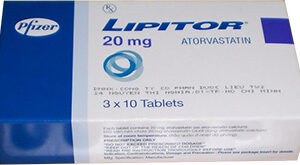Medication Overview
Crestor, known generically as rosuvastatin calcium, belongs to a class of medications called statins. It functions primarily to reduce levels of “bad” cholesterol (LDL) and triglycerides in the blood, while simultaneously increasing the levels of “good” cholesterol (HDL). It operates by hindering the production of cholesterol in the body, contributing to the prevention of heart disease and arterial conditions caused by cholesterol build-up.
Indications and Usage
Crestor is indicated for the therapy of patients with hyperlipidemia and mixed dyslipidemia to diminish the risk of cardiovascular events, such as heart attacks and strokes, especially in individuals with diabetes, a history of heart disease, or other risk factors. Additionally, Crestor is utilized in the management of homozygous familial hypercholesterolemia, a rare genetic disorder that causes high cholesterol levels.
Dosage and Administration
Rosuvastatin calcium is usually administered once daily. The dosage range often starts at 5 mg and may extend up to 40 mg per day depending on the patient’s response to the medication and specific health requirements. Physicians will typically initiate treatment with the lowest possible dose and adjust gradually as needed. The drug may be taken with or without food and should be consumed consistently at the same time each day for optimal effect.
Contraindications
Individuals with a known hypersensitivity to any component of Crestor or those with active liver disease are advised against using this medication. Women who are pregnant or may become pregnant should not take Crestor as it may harm the fetus. Additionally, nursing mothers should refrain from using this medication since it can pass into breast milk and may harm a nursing infant.
Warnings and Precautions
Before starting treatment with Crestor, patients should be aware of several important warnings. Myopathy and rhabdomyolysis with acute renal failure have been reported with statin use, and the risk increases when used concomitantly with certain medicines. Regular liver function tests are recommended as Crestor can lead to liver abnormalities. Those who consume substantial amounts of alcohol or have a history of liver disease must be particularly cautious. New-onset diabetes mellitus has been reported with statin use, so glucose levels should be monitored. Patients should be advised to report any unexplained muscle pain, tenderness, or weakness immediately.
Adverse Reactions
While many individuals tolerate Crestor well, some may experience adverse reactions. Commonly reported side effects include headache, nausea, myalgia, asthenia, constipation, and abdominal pain. Severe side effects, though rare, should be reported to a healthcare professional immediately and may necessitate discontinuation of the medication.
Drug Interactions
Crestor has the potential to interact with various medications, which can either increase or decrease its effectiveness or lead to increased risk of serious side effects. Such drugs include, but are not limited to, anticoagulants, other lipid-lowering therapies, several types of antibiotics and antivirals, and drugs containing cobicistat. It is crucial for patients to inform their healthcare provider of all medications they are currently taking before initiating therapy with Crestor.
Use in Specific Populations
Certain populations must exhibit caution when using Crestor. In children under 18, the safety and efficacy remain undetermined. Geriatric patients may require dosage adjustments due to the increased likelihood of renal impairment. Crestor should be used with caution in individuals with a history of kidney disease and those of Asian descent, as they may exhibit higher drug levels, necessitating lower doses.
Overdosage
In the event of an overdose, symptomatic and supportive measures should be employed. While there is no specific treatment to reverse the effects of an overdose of Crestor, hemodialysis does not significantly enhance clearance of the drug from the body, hence it is not expected to be beneficial for overexposure treatment.
Clinical Pharmacology
Crestor’s mode of action entails the inhibition of HMG-CoA reductase, an enzyme crucial for the biosynthesis of cholesterol within the liver. The inhibition leads to a decrease in cholesterol levels and an increase in the uptake of LDL particles from the bloodstream. The pharmacokinetic profile shows that rosuvastatin is absorbed rapidly and reaches peak plasma concentrations within hours after oral dosing.
How Supplied/Storage and Handling
Crestor is offered in several dosages, including tablets of 5 mg, 10 mg, 20 mg, and 40 mg. It should be stored at room temperature away from excess moisture and heat. Tablets must be kept in their original packaging until they are used, and any unused medication should be disposed of in accordance with local requirements to prevent accidental ingestion by others.
Patient Counseling Information
Healthcare providers should counsel patients about the significance of adhering to prescribed cholesterol-lowering diet plans, the necessity of regular exercise and weight management, and the importance of routine follow-up, including blood tests to monitor cholesterol levels. Patients should also be informed about the potential for muscle symptoms and the need to report unexplained muscle pain or weakness immediately, alongside the potential risks of liver damage, and the importance of avoiding pregnancy.
By utilizing this guide, patients can understand how to use Crestor effectively and safely to manage their cholesterol levels and reduce the risk of cardiovascular disease. Always consult with a healthcare provider for personalized medical advice and before making any changes to medication regimens.



Reviews
There are no reviews yet.